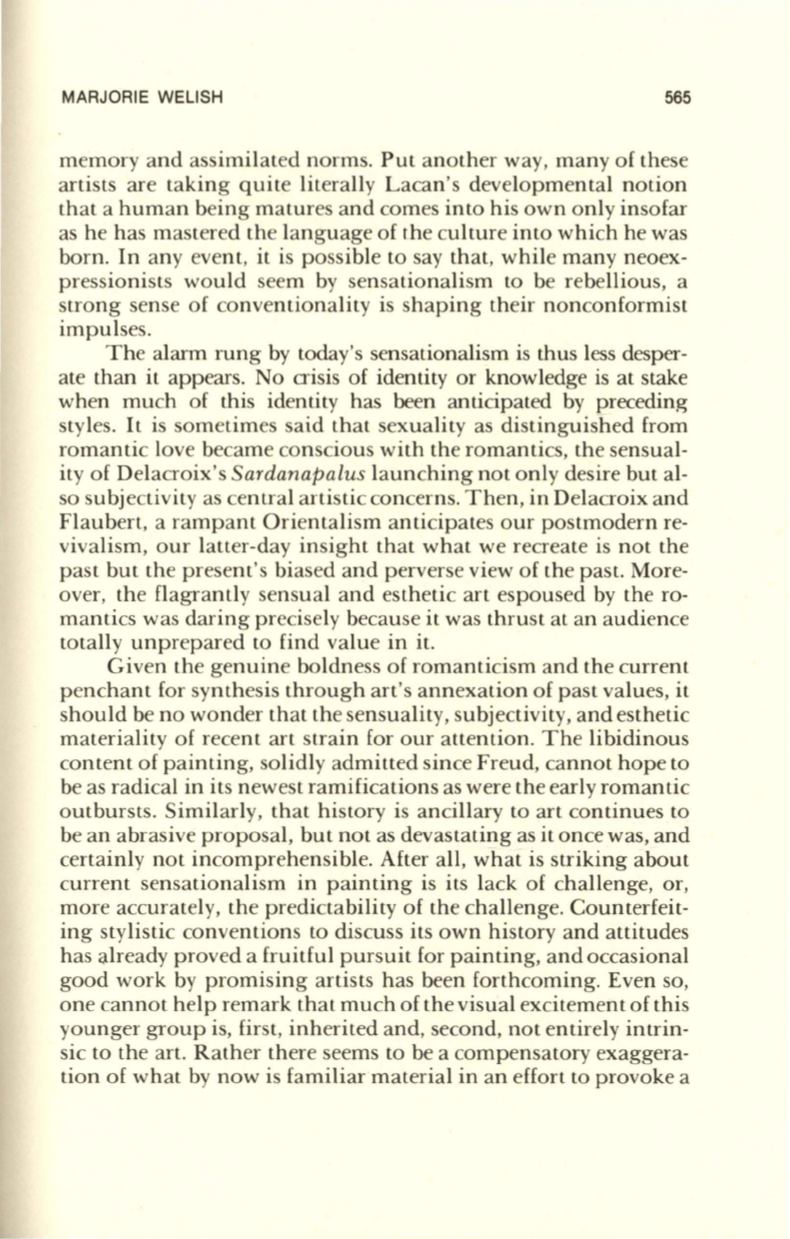
MARJORIE WELISH
565
memory and assimilated norms. Put another way, many of these
artists are taking quite literally Lacan's developmental notion
that a human being matures and comes into his own only insofar
as he has mastered the language of the culture into which he was
born. In any event, it is possible to say that, while many neoex–
pressionists would seem by sensationalism to be rebellious, a
strong sense of conventionality is shaping their nonconformist
impulses.
The alarm rung by today's sensationalism is thus less desper–
ate than it appears. No crisis of identity or knowledge is at stake
when much of this identity has been anticipated by preceding
styles. It is sometimes said that sexuality as distinguished from
romantic love became conscious with the romantics, the sensual–
ity of Delacroix's
Sardanapalus
launching not only desire but al–
so subjectivity as central artistic concerns. Then, in Delacroix and
Flaubert, a rampant Orientalism anticipates our postmodern re–
vivalism, our latter-day insight that what we recreate is not the
past but the present's biased and perverse view of the past. More–
over, the flagrantly sensual and esthetic art espoused by the ro–
mantics was daring precisely because it was thrust at an audience
totally unprepared to find value in it.
Given the genuine boldness of romanticism and the current
penchant for synthesis through art's annexation of past values, it
should be no wonder that the sensuality, subjectivity, and esthetic
materiality of recent art strain for our attention. The libidinous
content of painting, solidly admitted since Freud, cannot hope to
be as radical in its newest ramifications as were the early romantic
outbursts. Similarly, that history is ancillary to art continues to
be an abrasive proposal, but not as devastating as it once was, and
certainly not incomprehensible. After all, what is striking about
current sensationalism in painting is its lack of challenge, or,
more accurately, the predictability of the challenge. Counterfeit–
ing stylistic conventions to discuss its own history and attitudes
has Q.lready proved a fruitful pursuit for painting, and occasional
good work by promising artists has been forthcoming. Even so,
one cannot help remark that much of the visual excitement of this
younger group is, first, inherited and, second, not entirely intrin–
sic to the art. Rather there seems to be a compensatory exaggera–
tion of what by now is familiar material in an effort to provoke a


